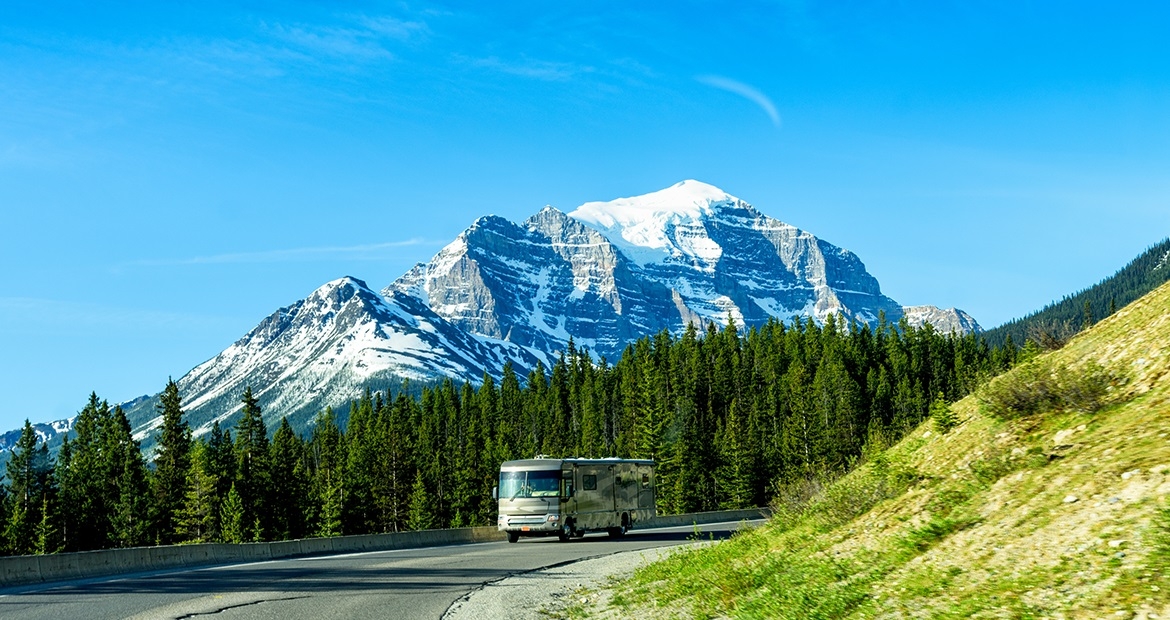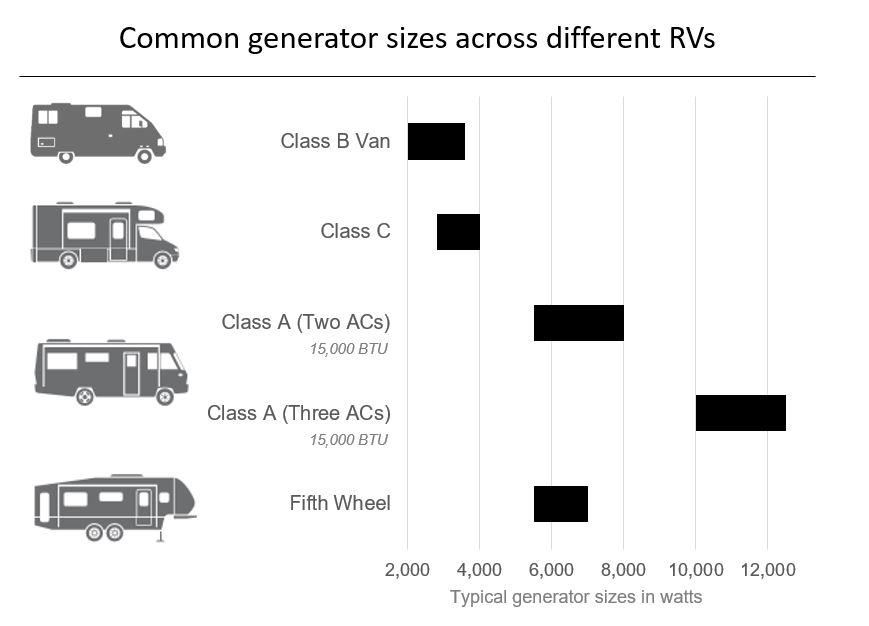What size generator do I need to power an RV?
By Aytek Yuksel, Content Marketing Leader - Power Systems

Stainless steel refrigerators, microwave ovens, and air conditioners (ACs); modern recreational vehicles (RVs) are truly home away from home. In fact, some of the large and luxurious RVs feature RV generators that are more powerful than the back-up power generator you might be using at your home.
You might feel overwhelmed as you try to find the right size generator to power your RV. There are lots of options in the market and terminology around watts, amperages and volts. Meanwhile, there are simple methods you can use to narrow your options. In this article, you will find the answers to common generator sizing questions. If you are new to RV generators, check out RV generator basics for an intro.
What size generator do I need for my RV?
While the size of the generator you need depends on specific equipment you have within the RV, below is some high-level guidance.

- Class B Van with one AC unit: 2,000 to 3,600 watts
- Class C RV with one AC unit: 2,800 to 4,000 watts
- Class A RV with two AC units (15,000 BTU each): 5,500 to 8,000 watts
- Class A RV with three AC units (15,000 BTU each): 10,000 to 12,500 watts
- Fifth wheel with two AC units: 5,500 to 7,000 watts
Please keep in mind, these ranges could change based on your specific equipment.
Let’s take a more detailed look at the equipment within your RV, which will help identify the generator size you need.
The first consideration is the electrical power needed by each appliance and device. Here is a list of common appliances and the amount of electricity they each need.

- AC units are often the appliance that requires the most power in an RV. AC units 13,500 to 15,000 BTU need between 1,200 and 2,400 watts of electricity to run. If you have multiple AC units, you can multiply the wattage needed accordingly.
- Dishwasher: 1,200 to 2,400 watts
- Stove: 900 to 2,500 watts
- Hair dryer: 1,200 to 1,875 watts
- Clothes iron: 1,000 to 1,800 watts
- Washer: 1,000 to 1,500 watts
- Coffee maker: 900 to 1,200 watts
- Microwave: 750 to 1,500 watts
- Toaster: 800 to 1,400 watts
- Refrigerator: 400 to 1,000 watts
- Blender: 450 to 700 watts
- TV: 43 to 600 watts
- Radio: 50 to 200 watts
- Gaming console: 70 to 180 watts
- Laptop: 20 to 50 watts
Please note that some appliances have large compressors and motors. These could require higher wattage when they start.
The second consideration is looking at the usage pattern for the appliances and devices. For example, you would likely not operate all these appliances at the same time. In addition, some appliances like refrigerators will run more frequently than others, like toasters.
The final consideration is the difference between starting and running power. Some appliances need more power for a short time at the beginning of their operation. For example, AC units would draw much more power when they first start.
What is the difference between 30-amp and 50-amp RV?
Let’s start with the basics. Electricity is simply the flow of electrons. You can read more about it in our article explaining the difference between electricity and energy. Amperage is the volume of electrons that flow, and a higher amperage means more electrons flowing and consequently more electricity.
Thirty amp and 50-amp are the two most common electrical service capacities used within RVs. A 50-amp service can handle more electric power than a 30-amp service; this is because a 50-amp service can handle a higher volume of electrons. When you multiply amperage with voltage, you find the electrical power. Most electrical equipment in RVs operate at 120 volts, independent of 30-amp or 50-amp service.
To find how many watts of power you have available, you need to multiply volts times amps. For example, a 30-amp RV with a 120 V electrical source would be capable of handling about 120 x 30 or 3,600 watts of electric power.
What size generator do I need for a 30-amp RV?
An RV with a 30-amp shore power connection and with 120 V equipment would be capable of handling a maximum of about 3,600 watts of electric power. This means a 3,600-watt generator would give you the same amount of power as shore power. Meanwhile, you can also get a 4,000-watt generator for these coaches to give additional electrical motor-starting power.
A 2,500-2,800-watt generator is often a good minimum threshold for 30-amp RVs that have AC units.
What size generator do I need for a 50-amp RV?
An RV with a 50-amp shore power connection typically has two separate 50-amp feeds. This is different than a 30-amp RV with only one 30-amp feed. A 50-amp RV with a 120 V electrical feed is capable of handling 12,000 watts of electric power. This means a 12,000 or 12,500-watt generator could be your top end choice.
You can also get a better sense of the generator you need using the bullet points in the first section of this article, under “What size generator do I need for my RV” header.
Now that you have a better idea on the generator size you need, don’t forget to check how to find a quiet generator for your RV.
Get the most out of your RV! Sign-up below to receive periodic tips and insights any RVer would enjoy .
Author Profiles

Aytek Yuksel, Content Marketing Leader - Power Systems
Aytek is a marketing leader at Cummins, focusing on technology and thought leadership. Since joining in 2008, he has held various marketing roles and now shares insights on markets, technologies, and energy transition. Aytek lives in Minneapolis with his wife and two kids.
Temas relacionados
Related Tags